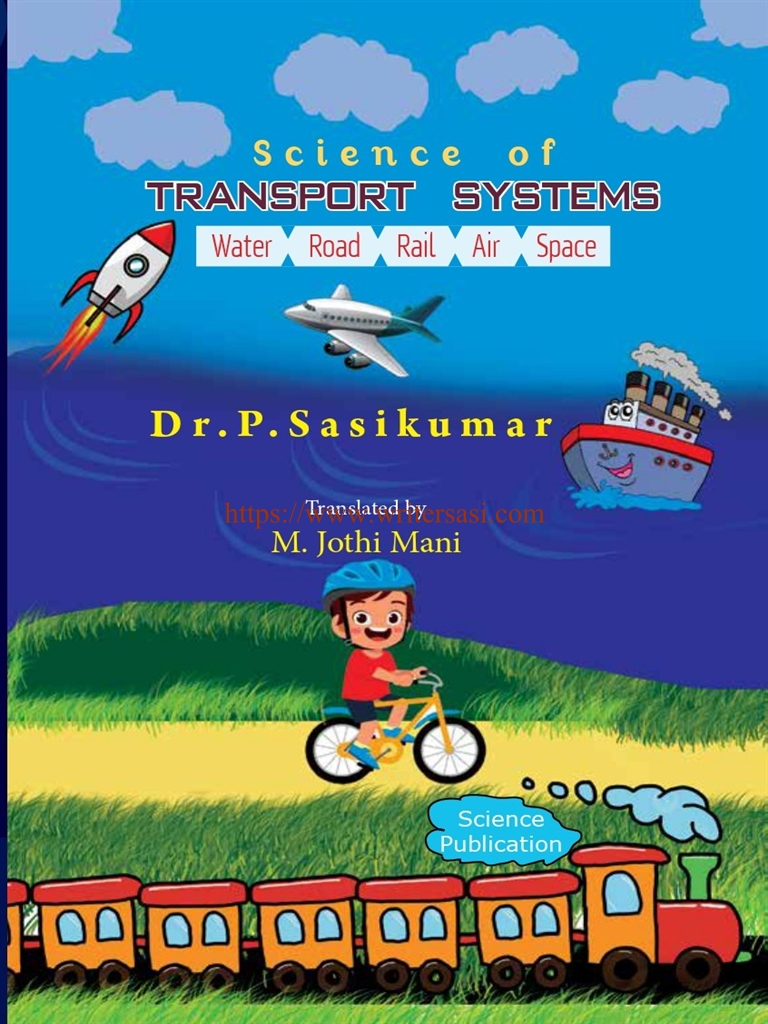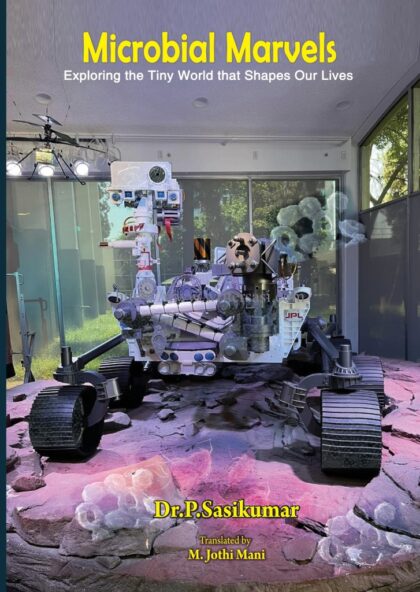Science of TRANSPORT SYSTEMS
Water/Road/Rail/Air/Space
Dr.P.Sasikumar
Translated by M.Jothi Mani
We say that the world has shrunk since humans began moving rapidly from one place to another. Transportation plays a pivotal role in bringing the world into our hands. In the early days, transportation began with water, extended to roads, and then progressed to specially laid rails. Airborne transportation, which moves through the air without touching the ground, has enabled travel faster than all of these. If you remain on Earth, how can you resist the idea of traveling to the next planet? Subsequently, transportation for space travel emerged. This book delves into the science behind these five modes of transportation.





Sasikumar –
The human body derives energy from the food we consume. Bicycles harness this energy to propel the vehicle forward, offering a simple, cost-effective, and moderately-paced mode of transport. Irrespective of the size of the vehicle one might drive later in life, learning how to ride a bicycle as a child holds significant importance. But is cycling really as easy as it seems? Let’s explore the science and design of its components from a different perspective.
Humans developed flying machines after observing how birds fly. However, Have you ever wondered why the discovery of an airplane took so many years? What is the airplane’s speed? How much will it weigh? And how much weight can it carry? Additionally, what similarities exist between the flight of an airplane and that of a bird? How high should airplanes fly? Can an airplane travel faster than the speed of sound? Moreover, what materials are aircraft parts made of? Lastly, what fuel is used in aircraft? These questions intrigue people of all ages, from children to adults who travel by air. Explore the answers to these fascinating questions by delving into this book.
High-speed travel entails the use of rockets. The rocket that successfully transported man to the moon achieved a remarkable speed of forty thousand kilometres per hour. Nevertheless, despite this impressive feat, we still face limitations in our ability to reach distant planets, as this speed falls short. Why then, would a rocket choose to travel at such a speed, carrying its own air supply beyond the Earth’s atmosphere? Is aircraft technology truly that complex? And why is the utilization of fuels necessary in this context? This handbook aims to address these inquiries in a straightforward manner.
Did you know that approximately 70% of the Earth’s surface is covered by sea water? In addition to the vast oceans, essential freshwater sources like lakes, ponds, puddles, and rivers are scattered all over the globe. Even in ancient times, humans utilized waterways to transport cut wood from dense forests to cities. Among all modes of transportation, ships stand as the heaviest and most fascinating means of travel. Embark on a journey to explore the awe-inspiring world of ships and discover the engineering marvels that make these giants of the sea possible.
The sight of a moving train and an elephant creates an unforgettable experience, captivating not only children but also adults. Trains are renowned for being the most energy-efficient mode of transportation available, providing a comfortable journey on ground. Have you ever wondered why trains require a separate track and why multiple trains are necessary? This section aims to elucidate the science behind trains, encompassing their track layout to coach design.